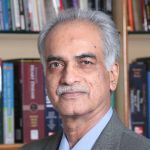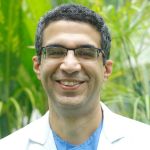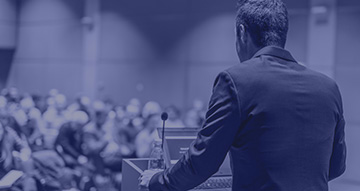Healthcare Reform: Reinstating the Noble Stature
By Dr B Somaraju and Dr Rajeev Menon of AIG Hospitals |Sep 01, 2021

With growing commercialisation, is the healthcare industry losing its sheen? Does the triad of people, profits and planet have the power to go hand-in-hand? Dr B. Somaraju and Dr Rajeev Menon from AIG Hospitals delve into the cracks and reflect upon how strategic thinking and management can yield economically sustainable and viable solutions for the healthcare sector, when based on the tenets of knowledge-sharing, patient-centredness and teamwork.
The field of medicine has always been considered as one of the highest professions in the public eye—the power to heal others is a gift, and doctors are considered next only to God, almost universally. In yesteryears, the debate was often if medicine was an art or a science. However, in more recent times, healthcare has become a business where personal interest has taken over and the basic tenets that lent uniqueness and authenticity to the profession seem to be getting lost.
The Evolving Role of Doctors and Healthcare Delivery Professionals
In his book, Harrison’s Principles of Internal Medicine, 1950, Dr Tinsley Harrison, says, “No greater opportunity, responsibility, or obligation can fall to the lot of a human being than to become a physician. In the care of the suffering he needs technical skill, scientific knowledge, and human understanding. He who uses these with courage, humility and wisdom will provide a unique service to his fellow man and will build an enduring edifice of character within himself. The physician should ask of his destiny no more than this and he should be content with no less.”
In earlier days, we thought scientific knowledge and technical skills are difficult to acquire, and human understanding was easy. However, the truth is that human understanding is a lifelong skill, not easy to master. When Dr Harrison talks of ‘courage,’ we now understand it is the courage to see patients in the face of a pandemic, courage to make less money and still treat all patients, without worrying about profitability. Though not stressed enough, empathy and patient-centredness are fundamental to medicine.
We ought to be able to deliver ‘safe, effective, efficient, equitable, timely, and patient-centred’ healthcare.[1] These form the pillars of quality healthcare delivery, and the way we see it, this is not happening today. What are the possible solutions to fix these?
Affordability and Accessibility at the Heart of Healthcare Delivery
When COVID-19 struck, healthcare in general, and medicine in particular, had an opportunity to reestablish its lost trust in the public, but unfortunately, in India, it was not used to advantage by both public and private organisations. Public apathy and private greed took over with a few exceptions. As people scrambled to get medical care, it was getting costlier to get hospitalised and access care in public systems. Affordability and availability of critical medicinal supplies in the current scenario became the biggest concern.
In a developing country like ours, the cost of care needs to come down in order to make any real-time impact for the general populace and it is indeed achievable via knowledge-sharing and teamwork. Here’s how.
We would like to talk about the ‘Kalam-Raju stent’, which is a perfect example of indigenisation and cost-effective solutions, leveraging technology for a massive health requirement. Introduced in 1998, the Kalam-Raju stent was the first indigenous low-cost coronary stent, priced at ₹15,000, which transformed the treatment of heart attacks back in the day. It was Dr Kalam’s vision to leverage defence technology in the field of medicine for the good of the larger public. A unique thought process which believed in knowledge-sharing as opposed to working in silos brought down the cost by almost 75% and benefitted thousands. A team of several technological scientists and doctors managed to give shape to this vision after almost five years in the days when the internet wasn’t even around, and knowledge-sharing was a very concerted effort.
Commercialisation vis-à-vis Social Good
Back in the 90s, as doctors, we never refused an emergency patient. We went by the fundamental principle that finances should never be the reason for a patient lacking adequate healthcare. However, with newer models of third-party investors and corporate hospitals coming in, last quarter profitability has taken precedence over the quality of healthcare in board-room discussions. In order to bring about a real change, it is imperative to understand that financial issues like the cost of land or construction of the hospital are secondary. The most vital asset is the human resource and knowledge quotient which does not comprise doctors or nurses alone but multi-specialty and interdisciplinary groups too. The philosophy of patients and employees-first, rather than investors-first, needs to be deployed.
During the pandemic, doctors and hospitals made a lot of money for a disease that does not have a cure yet. A lot of hit-and-miss experiments occurred, and mindless usage of drugs like steroids, in some cases, ended up harming patients rather than helping them.
“Today, CT scans are among the commonest tests prescribed by doctors, which in my opinion is improper, as it has heightened the possibility of cancer cases in the next few decades.”
-Dr B. Somaraju
Social good and profitability don’t necessarily go against each other; it is the greed to make money at the expense of everything else that constitutes the problem. There is, therefore, a thin line between profitability and insatiable greed. But medicine as it stands today, has ample opportunity to do good in the social sector, while making adequate profits and ensuring sustainable organisations.
Pandemic-induced Adoption of Tech: Multiple Perspectives
“In our experience, the pandemic did not really change much for us as there are still higher number of patients lined up to see Dr Somaraju than me, be it online or offline.”
-Dr Rajeev Menon
However, the upside of it is the avenues that this has opened for the public. The sheer ‘reachability’ of online consultations is a massive advantage for patients making it possible to get the care they need, even from the remotest corner of the country at the click of a button. It cannot replace the face-to-face interactions, physical examinations or even the banter, but it is surely beneficial to see a doctor online versus not seeing one at all. Technology has, therefore, revolutionised doctor-patient interactions and this hybrid model of consultations will continue in the post-COVID era too. It has also had a positive impact on medical education, opening it to students across the globe.
While technology enabled us to fill in the gap via online consultations, telemedicine is no answer to the problems at hand. For instance, when a patient comes to the hospital with chest pain, it could be anything from a serious heart attack to a tear of one of the major blood vessels or something as trivial as muscle pain. The possibilities are enormous and nearly 12 to 15% of patients still go undiagnosed. One of the most common causes for medico-legal issues in American medicine under emergency medicine is chest pain. Patients are told that they are good to go after some tests and a complete physical examination, and yet some of them succumb at home. If these are the possibilities in an average physical examination, one can only wonder what would happen online with limited clinical skills. Pattern recognition, eye contact and physical examinations remain critical and thus, telemedicine is an answer to a limited category of patients, not all.
Revamping the Healthcare Delivery Model
When we speak of affordable healthcare, the entire healthcare delivery system needs to be redefined. Healthcare is not just what is delivered in tertiary hospitals and intensive care units (ICUs)—that is merely the tip of the iceberg. The health of the community is not dependent on the number of ICUs or critical care beds but the social determinants of health (SDH)[2]—the socio-economic conditions influencing health outcomes—that remain unaddressed. For instance, we only deal with patients who come to us in person. When they leave after the consultation, we do not have any way of knowing if they will schedule a follow-up, or if they will survive. Despite this, outpatient departments continue to operate.
Moreover, we do not address healthcare at the community level, right from prevention to primary care, secondary care, and long-term follow-up of chronic diseases from birth to death. As per World Health Organization (WHO), research[3] has shown that the social determinants may be more crucial than healthcare in influencing health. Multiple studies suggest that SDH account for 30 to 55% of health outcomes. This is why we need to redesign the current delivery systems, starting from the root cause, across both public and private sectors to make it more affordable. The American Medical Association (AMA) has recently come out with a solution—the health system sciences model—which seems likely to work due to its all-encompassing approach of understanding how healthcare is delivered, the role of doctors in delivering that care and the ways of improving it.
Since the 60s, the emphasis has been on biological and clinical sciences, which is no longer adequate. The current times call for a more holistic approach, and capitalising on other disciplines—namely the social sciences, economics, mathematics, physics, chemistry, information technology, along with experts from other sciences which are traditionally not a part and parcel of medical education. In this light, education and healthcare delivery cannot be separated, but need to be an amalgamation of diverse perspectives.
The Way Forward: ‘Infinite Game'[4] of Medicine
“Have you identified someone who can do the work you are doing as well as you or even better than you? If the answer is yes, then you have done well. If no, you have a long way to go.”
-Dr B. Somaraju
To build strong teams that deliver their best, the real investment lies in people—nurses, doctors, housekeeping and support staff, and multi-specialty experts—who are the backbone of healthcare delivery systems. The sense of belonging and shared income (not only material gains but also fame and recognition) go a long way in building robust teams. Today, this mentoring and sharing needs to be broadly inclusive, involving the wider healthcare delivery system, not doctors alone, but all the unsung heroes across the spectrum.
In terms of skill set, doctors must learn management skills and managers need to understand medicine in order to make effective teams. The current crisis showed us that doctors alone cannot change the face of healthcare delivery, it needs to extend beyond borders, involving a liberal sharing of best practices. Advanced technology and innovative solutions need to be brought forth via collaboration. Investment models are to be designed in a manner that they do not look at high profitability in areas like healthcare and education.
Collaboration across primary, secondary and tertiary care, including community hospitals, telemedicine and home care will bring about enduring long-term changes, even if they appear difficult to measure now. The infinite game of medicine cannot be expected to yield overnight returns. It is about building sustainable systems for future generations, and not short-term quantitative gains.
“It is about a cooperative model—a group of like-minded people—willing to be the change. We are looking forward to having people from different walks of life join us in this infinite journey."
-Dr B. Somaraju
[1] Institute of Medicine (1999). To Err Is Human: Building a Safer Health System. https://www.nap.edu/resource/9728/To-Err-is-Human-1999--report-brief.pdf
[2] SDH Examples by World Health Organization (WHO)—Income and social protection, education, unemployment and job insecurity, working life conditions, food insecurity, housing, basic amenities and the environment, early childhood development, social inclusion and non-discrimination, structural conflict, access to affordable health services
[3] World Health Organization. (2021). Social determinants of health. https://www.who.int/health-topics/social-determinants-of-health#tab=tab_1
[4] Sinek, S. simonsinek.com. https://simonsinek.com/the-infinite-game?ref=home
Keywords:
Healthcare, healthcare delivery, affordability, teamwork, knowledge-sharing, social good, sustainability, commercialisation

Dr B. Somaraju, Director, Division of Cardiovascular Sciences, AIG Hospitals
In a career spanning 40+ years, Dr Somaraju has worked towards realising his mission of affordable healthcare via indigenous solutions. He pioneered the concept of teamwork and shared income, with ‘innovation’ at the core of his research. He founded CARE Hospitals in 1997, as a specialty hospital for cardiac surgeons, critical care and emergency medicine specialists. As Professor and HOD Cardiology at Nizam's Institute of Medical Sciences, he has been instrumental in mentoring several young cardiologists. Among numerous other awards, Dr Somaraju is the recipient of Padma Shri (2001) and India’s Most Admired Surgeon award (2014).

Dr Rajeev Menon, Head, Division of Cardiology, AIG Hospitals



